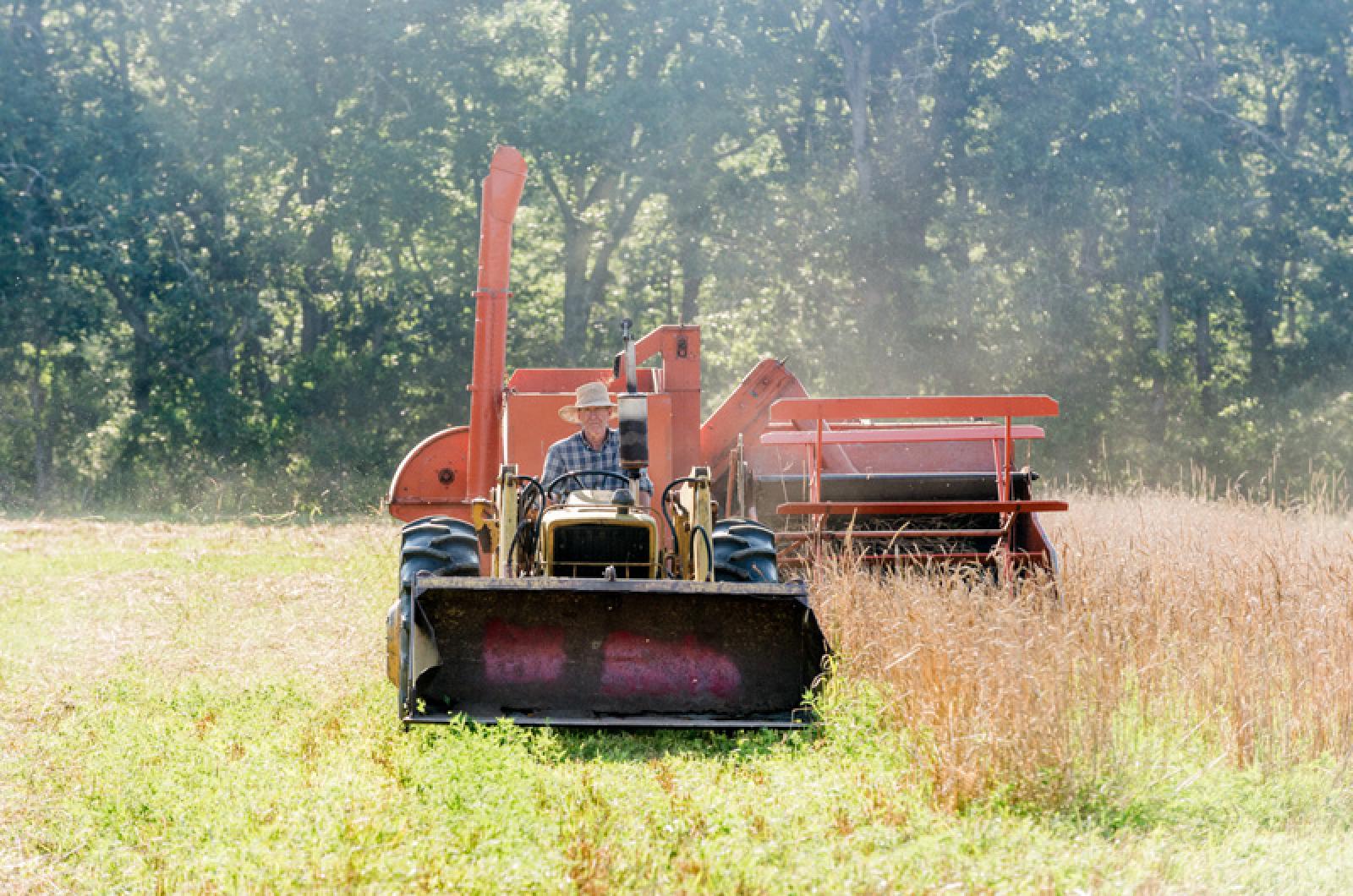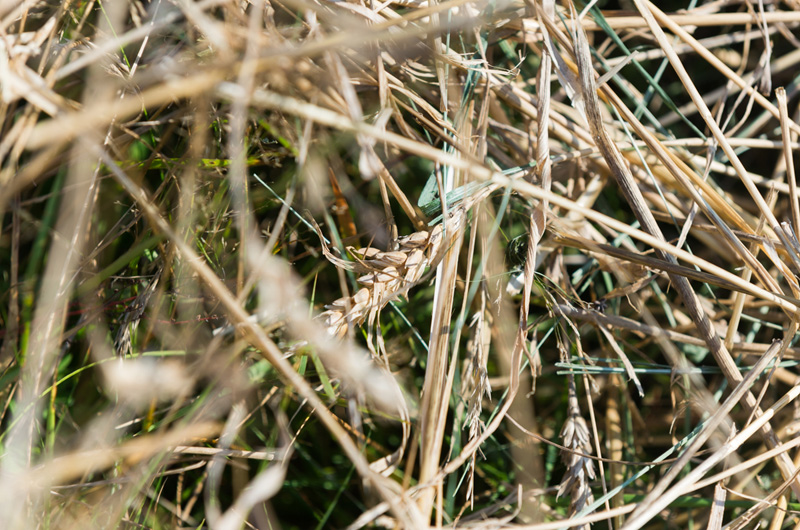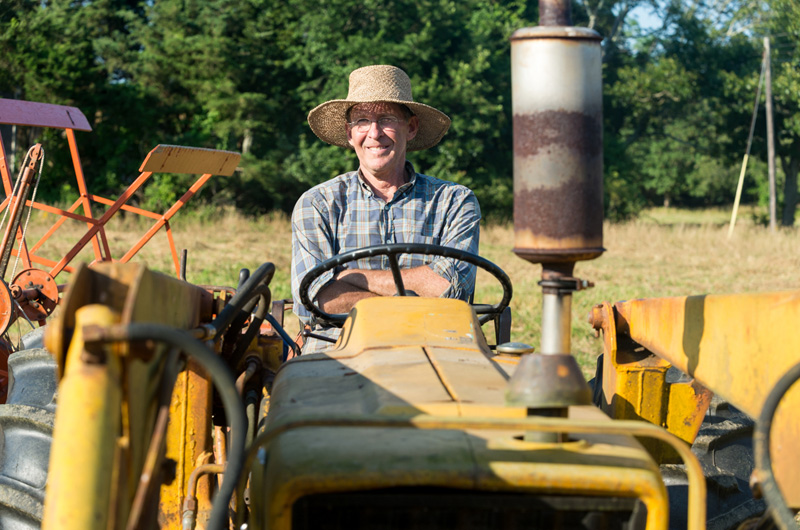As we head toward the 156th Agricultural Fair and all the Island farming tradition that it celebrates, it is exciting to see Dan Sternbach out in the field, harvesting this year’s local wheat and rye.
Wheat used to be grown all over New England and stone ground at mills close to where it was grown. All that changed when the Erie Canal opened in 1825 and the Midwest became accessible for growing grains. The topsoil was much deeper and a more consistent quality of wheat could be grown there. The steel roller mill, popularized in the late 19th century, further moved us to where we are today. Unlike stone grinding where the whole wheat kernel is crushed and ground, the steel roller mill could separate out the endosperm from the bran and germ and produce white flour which was highly sought after and much less perishable. Because white flour does not have the oils from the germ, it has a longer shelf life and could be shipped all around the country.
The quality of wheat grown in the Midwest was also more consistent, allowing bakeries to be able to more reliably produce a good loaf of bread. Faster rising times, monocrops of wheat and the use of greater amounts of white flour have all contributed to where we are today. Now, many whole wheat flours are milled by separating out the germ and bran, grinding the rest of the grain and then adding only a portion of the germ and bran back in at the end.
Dan’s wheat, which he calls Lost and Found Grain, is being grown and milled locally and is sold at Mermaid Farm in West Tisbury. Along with that of other grain growers in our region and in other parts of the country, this represents an exciting renaissance of the old varieties and ways of growing grain. Artisan bakers are also making more bread using natural leaveners or less yeast, resulting in longer rising times, making the nutrients in the grain more available to us.
All bread bakers need to adjust their formulas when starting in on a new season’s wheat, and with local wheat this is true all the more so. The local flour can present more of a challenge to use because its quality varies according to our soil and weather conditions during its growing season. Protein levels can vary and affect the amount of gluten in the flour and thus the quality of the finished loaf. But what is lost in consistency is gained in flavor and nutrition.
And so, to see Dan on the combine out in the field, threshing and separating the wheat from the chaff, is cause for celebration.
Kate Warner is the founder of the Vineyard Bread Project in West Tisbury.








Comments
Comment policy »